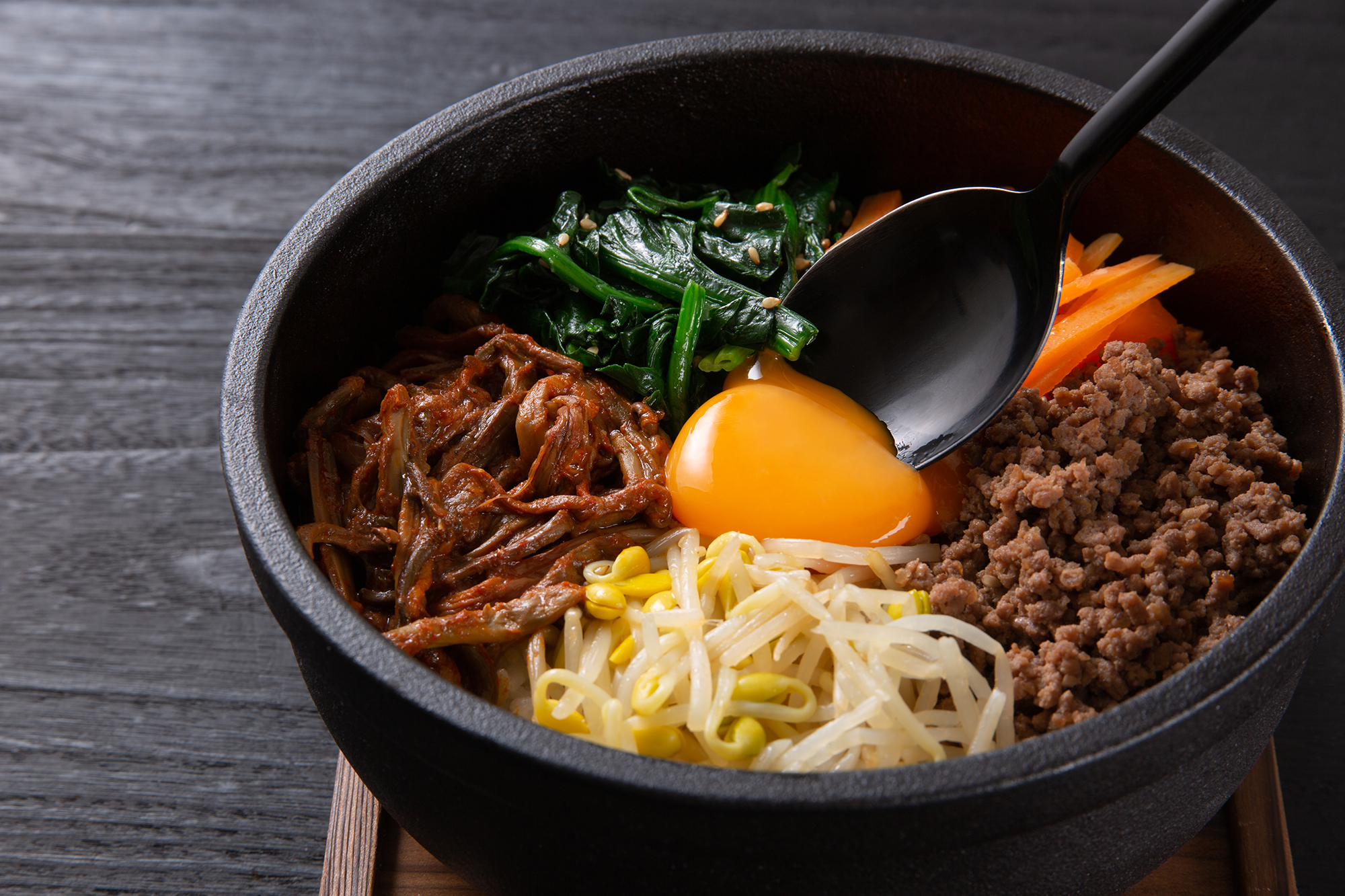
Two things surprised me the first time I stepped foot in a Chinese restaurant while in Italy. The first was that they sold spaghetti, despite being a Chinese restaurant—though with Chinese seasoning, of course. Because, as you probably know, while Chinese noodles are well known, spaghetti is not a part of traditional Chinese cuisine. The second surprise was that they heated the spaghetti up on a cast iron plate. The Italians were into that kind of food. Anyway, Chinese restaurants are where you go when you want to eat something exotic. In other words, whatever comes out of the kitchen, the locals were okay with it.
And when you come to Korea, you have to make good use of spoons. When foreigners, especially those from Western countries, go to learn about Korean food culture, they approach the chopsticks first. After all, chopsticks are common utensils used across Asia. Korea is unique in that they use heavy metal chopsticks, but regardless, as long as you’re skilled with chopsticks in general, you should have no difficulty in eating Korean food. But there’s something that you probably don’t know about: When it comes to Korean food, the spoon takes priority. In fact, the Korean word sujeo is an abbreviation of the words for “spoon” and “chopstick,” where “spoon” (su) comes first. Traditional Korean table manners warn against eating with chopsticks alone. Noodles, naturally, are the exception. The spoon makes it possible to eat rice and soup, the basic building blocks of Korean cuisine. And so it isn’t wrong to say that Korean food is one of rice and soup. But in recent years, it’s become more common for people to eat using chopsticks only because they eat less rice with their meals than before and the chopsticks are perfectly adequate when the rice is sticky. But the spoon still has its place for Koreans. When setting the table, the spoons are placed first; the chopsticks, like younger siblings, follow behind. Bibimbap in particular can’t be eaten with chopsticks. Korea’s love affair with bibimbap started long ago, and it remains a staple when advertising Korean food to consumers abroad. You’re always able to get bibimbap at a restaurant. Even if it’s not on the menu, you can still order it. Koreans will still occasionally ask their server, “Could I have a big bowl to mix this up in?” And they’re more than happy to oblige.
And that’s no problem, of course. There’s always a lot of side dishes on a Korean table. That’s Koreans for you: throwing together the main ingredients of a jjigae along with some banchan at any time to whip up some bibimbap in an instant. The servers will happily bring you out some sesame oil and gochujang sauce for free. Bibimbap carries with it a surprising amount of significance. Do you like samgyeopsal, by the way? It’s practically a must in Korea that barbecue joints will serve fried rice at the end of the meal. Trust me—fried rice after any kind of meat is the best. Fried rice is always sure to follow after a meal of dakbokkeum tang, dakgalbi, gopchang jeongolor gamja-tang (pork spine stew). All you have to do is sit back and watch the server make the fried rice while you hold back your drool. But this, too, is a kind of bibimbap. It looks like frying oil and rice in a pan, but in reality it’s closer to mixing it all together. In short, Koreans eat bibimbap all the time.
No one knows when bibimbap was first invented. It graced the king’s table and was equally popular on the tables of his subjects. Not only can you eat it in a jiffy, but, unlike some other Korean foods which have formal and complex recipes, bibimbap was designed to be made from whatever ingredients happen to be on hand. It’s likely that Koreans have eaten hundreds and hundreds of different kinds of bibimbap throughout the dish’s lifetime. Throw in some side dishes—be they leftovers or ingredients intentionally prepared for their use in bibimbap (the dish takes on a wide spectrum)—with the sauce of your choice, mix it all up, and you’ve got a winner. There’s also a really cool version called dolsot bibimbap, made in a heavy stone pot (and reminiscent of that spaghetti cooked on the cast iron plate). Eating bibimbap this way will give you the sweats, since it holds all the heat in. The generous helping of spicy gochujang plays a part as well, obviously. You could never eat this kind of bibimbap with chopsticks. Spoons are used in the West for soups, in China for stews that stay put in the center of the table and in Japan only for foreign foods like a rice and curry dish. Korean food seems to be the outlier, where there’s always a spoon set out without fail. Any dish can take on a more complex taste if you only use a spoon. If you eat using chopsticks, you end up putting the rice and side dishes into your mouth separately, but a spoon allows you to put all the ingredients in at once. Above all else, and luckily so, while it takes some time to perfect the use of chopsticks, anyone can use a spoon perfectly, right away. The whole reason the Korean table can support boiling food in earthen ttukbaegi pots in the first place is thanks to the spoon: You can grab a delicious bite of what’s inside that hot pot without ever having to touch it. So I invite you to enjoy the cuisine of Korea—the country that values spoons above all others in Asia!
-
 ©️ Shutterstock
©️ Shutterstock
Unauthorized reproduction and distribution prohibited.
- [NoW] Modern Korean Cuisine2021.05.14

- [NoW] Korean Barbeque2021.06.11

- [NoW] Fusion food in Korea2021.07.09

- [NoW] Pyongyang naengmyeon season2021.08.06


- [NoW] Welcome to gim’s golden age2021.10.01

- [NoW] Squid Game and Dalgona2021.10.29
